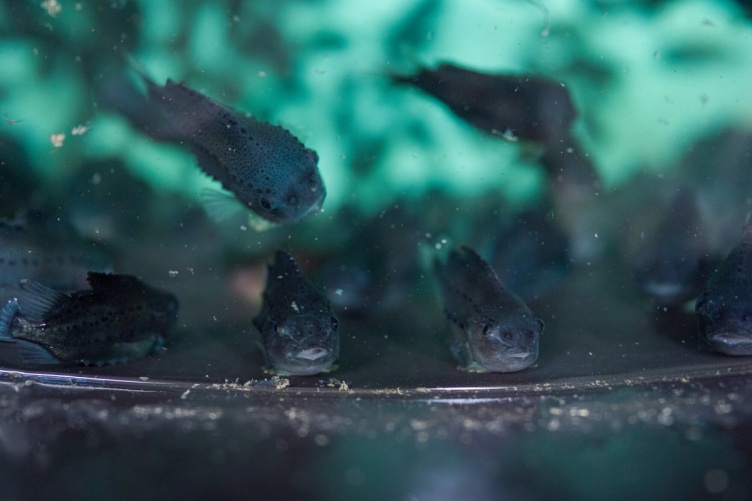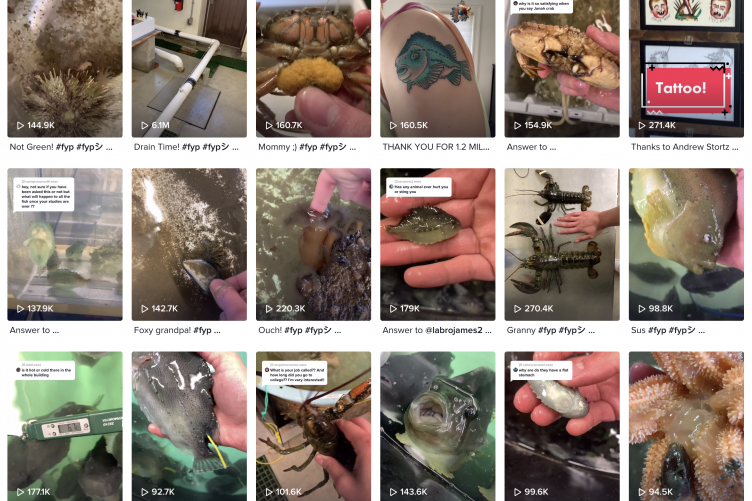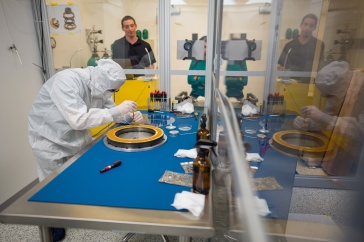Lumpfish. That’s what was featured in the first video Nate Spada '19 ever posted to TikTok, lumpfish and their eggs. Not exactly the kind of thing you’d expect to draw much interest, let alone more than a million followers — 1.1 million, actually, and 18.5 million likes. Surprised? Spada was, too.
“Honestly, I had no idea that people were this interested in marine biology,” Spada says. “When I posted my first viral TikTok last August, I never imagined I would gain the following that I have.”
A graduate student in marine biology, Spada found his passion for the color-changing lumpfish after hearing research associate professor Elizabeth Fairchild give a presentation to the UNH Sustainable Fisheries and Aquaculture Club. During the summer of 2019 he went to work in her lab, researching the best growing conditions for the fish some consider to be among the top-10 of ugly species.
Lumpfish play a role in the salmon industry. Much of the salmon we find in the grocery store is farm-raised in pens in the ocean. And that makes them susceptible to sea lice, which eat away at the fish, decreasing their market value. In the early 1990s, salmon farmers began using lumpfish to kill the parasites, but there is yet to be a prescribed best-method on raising them.
“Honestly, I had no idea that people were this interested in marine biology,” Spada says. “When I posted my first viral TikTok last August, I never imagined I would gain the following that I have.”
“Lumpfish act as a biological control, eating the sea lice off of the salmon in an ecologically friendly way,” Spada says. “There isn't one protocol that is drawn upon to grow the fish. That is what I am trying to help with; I want to find the best conditions to grow lumpfish in the most efficient way possible. Some of my experiments deal with nutrition while others deal with the holding conditions that the lumpfish are grown in.”
While they are key to his research, lumpfish aren’t the only examples of marine life Spada presents in his videos. A recent posting revealed what was found in the floor drains at the lab: a green sea urchin and two kinds of crabs. Some videos offer up information on sea urchins, lobsters, sea anemones and other fish being studied at the Judd Gregg Marine Research Complex, in Newcastle, New Hampshire.
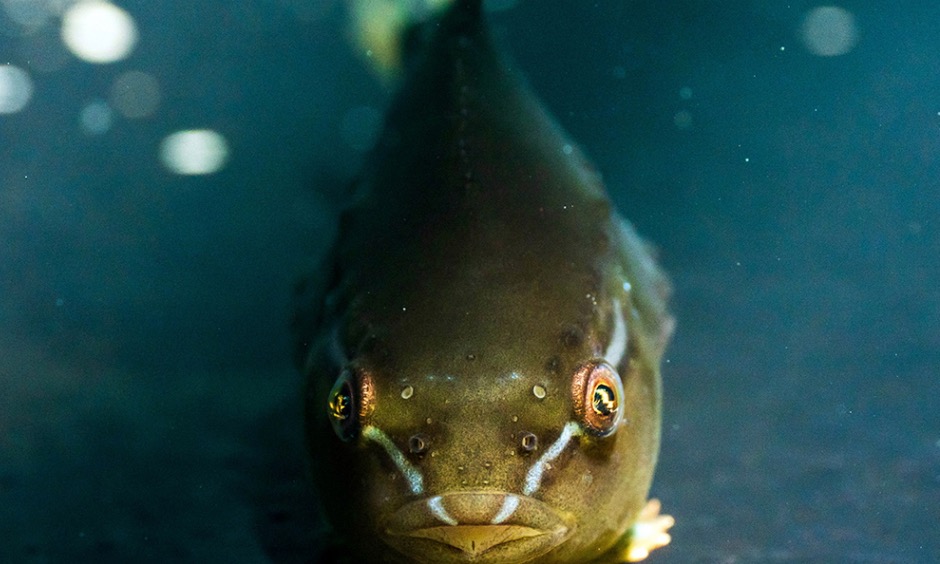
“The aquatic world is something that fascinates people because the creatures that inhabit it can look otherworldly. Many of my videos depict me searching for organisms, and I believe that seeing what's underneath the next rock at a tidepool is exciting,” he says.
It’s not only the exciting subject matter that has grown Spada’s audience. Many of his videos are set to music with what appears to be singing fish. In others he uses what he describes as his best David Attenborough impression.
“I get comments all the time saying that my voice provides a ‘serotonin boost’ for my viewers. I also try to bring some comedy into the mix,” the Connecticut resident says.
Whatever the attraction, it’s working. And helping to get the word about the great marine research being done at UNH.
Spada’s goal after completing his master’s degree is to work in the fisheries, aquaculture or marine ecology sector. Of particular interest to him is how humans impact the ecosystem. He also intends to continue his social media career — and with a million followers and a knack for a British accent, why wouldn’t he?
“I plan on continuing doing TikTok as well as moving to other platforms like YouTube. It will be a little more difficult to find content when I'll be out of the lab, but hopefully the job that I get can help with this,” Spada says.
Until then, you can check him out on TikTok (spadaniel44), and maybe even add to his following.
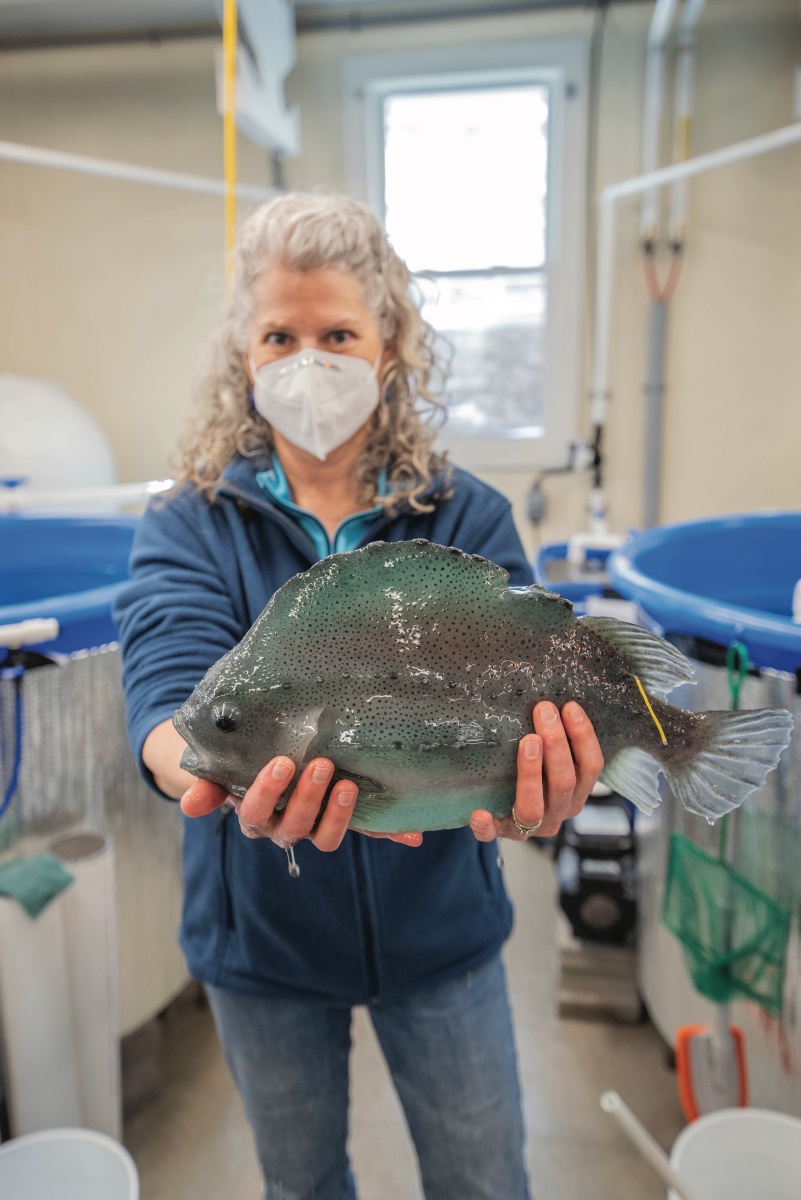
At UNH’s Coastal Marine Lab in New Castle, N.H., Elizabeth Fairchild raises and researches lumpfish as a potential pest-management solution for the aquaculture industry. Fairchild, research associate professor of biological sciences, is testing whether using lumpfish as “cleanerfish” — fish that eat parasites off other fish — may be a sustainable way to manage a common parasite known as sea lice that preys on farmed salmon. Lumpfish, Fairchild explains, eat sea lice off salmonids that are farmed in cages in nearshore coastal waters in the northern Atlantic Ocean.
The research could have far-reaching benefits: The global economic impact of aquaculture is greater than $31 billion. “Today many leased sites in Maine are not used or sit fallow for extended periods because of historically high sea lice concentrations,” Fairchild says. “Using cleanerfish to decrease the damage inflicted by sea lice can increase domestic salmonid production because more farm sites can be used — and used more frequently.”
"Today many leased sites in Maine are not used or sit fallow for extended periods because of historically high sea lice concentrations. Using cleanerfish to decrease the damage inflicted by sea lice can increase domestic salmonid production because more farm sites can be used — and used more frequently."
-
Written By:
Jody Record ’95 | Communications and Public Affairs | jody.record@unh.edu



















































